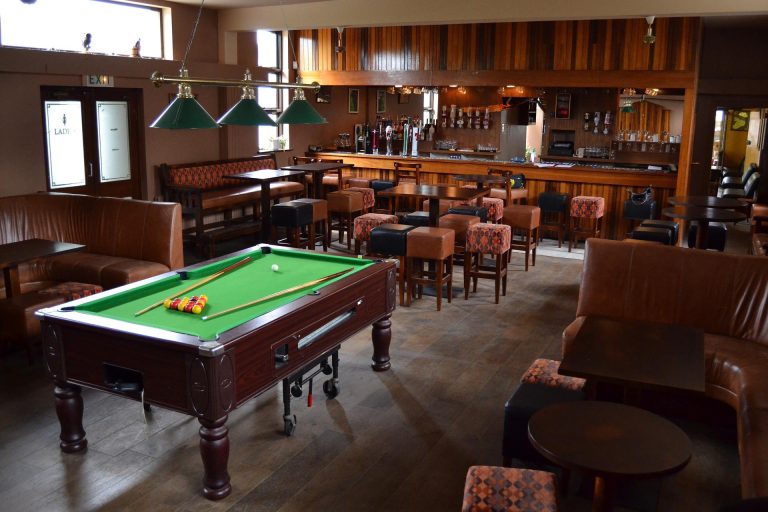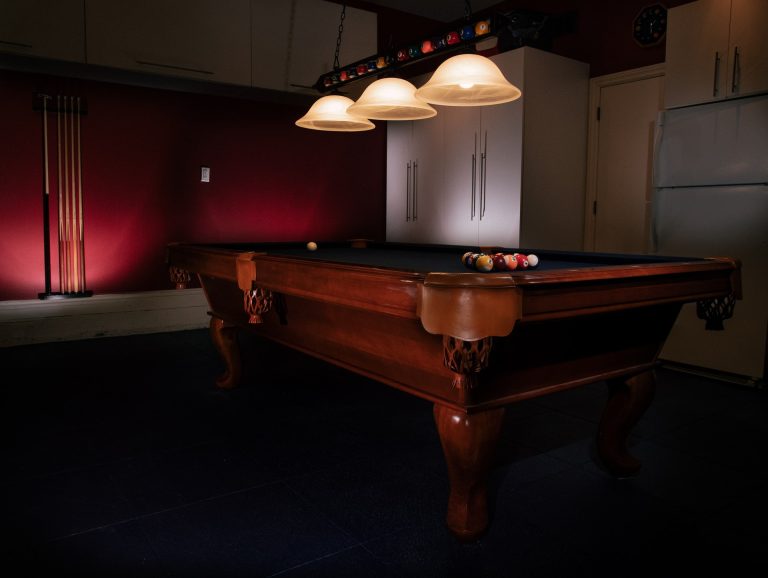How To Hold A Pool Cue
In the game of pool, having a good grip on your cue is essential to making accurate shots. There are many ways to hold a pool cue, and each player will have their preference. But there are some basic guidelines you can follow to ensure you have a good grip on your shot.
This blog post will explore how to hold a pool cue correctly so you can get up your game! Stay tuned for some helpful tips.
What Is a Pool Cue?
A pool cue is a tool used for playing billiards. Pool cues are usually made of wood, but others can also be made of aluminum or carbon fiber.
The end of the cue that strikes the ball is called the tip and is usually covered in a layer of leather, rubber, or phenolic resin.
Pool cues come in different weights and lengths, depending on the player’s preference.
Five Benefits of Playing Billiards
Playing billiards has many benefits, such as improving precision and hand-eye coordination.
- Playing billiards can improve your hand-eye coordination.
- Billiards can be a great way to socialize and meet new people.
- Playing billiards can help relieve stress and anxiety.
- Billiards can be a great workout for your arms and shoulders.
- Playing billiards can be a lot of fun!
Billiards is also a great way to improve your focus and concentration. Playing billiards can also help you to increase your mental agility.
Additionally, playing billiards can help reduce stress levels and promote a sense of calmness.
Finally, playing billiards is a fun way to spend time with friends and family. So if you want an enjoyable activity to improve your skills, then playing billiards is perfect!
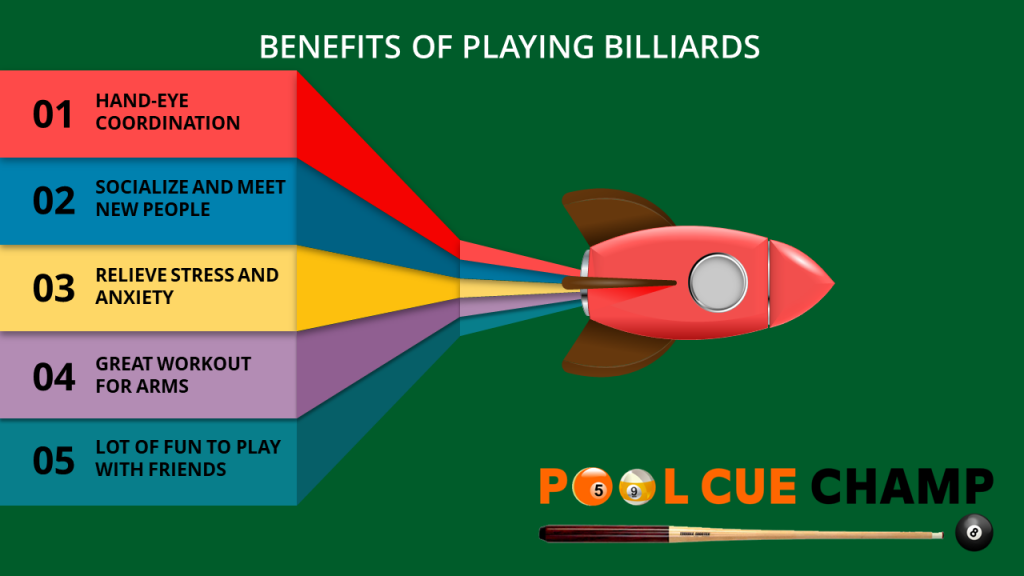
Why Is Pool Cue Used?
A pool cue is a tool used to strike balls in the game of pool. It is usually made of wood or fiberglass and is tapered so that it can be held easily in hand.
The cue tip is usually covered with leather or rubber to help provide a good grip on the ball.
Pool cues come in various sizes and weights, depending on the game type. In general, heavier cues are better for breaking shots, while lighter cues are better for control.
There are a few different ways to hold a pool cue, but the most common is the bridge hand. This involves having the cue in the palm of your hand, with your fingers extended out behind it.
How to Play Billiards for All Skill Levels?
There are a few different ways to play billiards, but the most common is eight-ball. Each player is assigned either solids or stripes in eight-ball, and the goal is to pocket all of your balls and then the 8-ball.
To start the game, the player with solids breaks, and then players take turns shooting until one of them wins.
If you’re new to the game, here are a few tips to help you get started:
- Aim for the middle of the ball – this will help you get a good hit and make it go where you want it to
- Put your cue stick down on the table so that it’s touching the ball – this will help you line up your shot
- Use a gentle back and forth motion to hit the ball – you don’t want to hit it too hard, or you’ll send it too far
Once you’ve got the basics down, start practicing your shots and see how many you can make in a row!
How To Hold A Pool Cue? [In 6 Easy Steps To Follow]
You can do a few things to help ensure that you’re holding your pool cue correctly.
One of the most important things is to ensure that your grip is firm and that you’re using both hands.
You’ll also want to avoid gripping the cue too tightly, which can lead to tension in your arms and affect your accuracy.
Here are a few tips for how to hold a pool cue:
- Grip the cue with your dominant hand halfway down the shaft. Use your thumb and forefinger to form a V-shape, and wrap your other fingers around the shaft.
- Grip the cue with your non-dominant hand below your dominant hand. Use your thumb and first two fingers to form a V-shape, and wrap your other fingers around the shaft.
- Make sure that your grip is firm and that you use both hands.
- Avoid gripping the cue too tightly, as this can lead to tension in your arms and affect your accuracy.
- Keep your elbows close to your sides and tuck your chin down slightly to ensure a stable stance.
- Use your body weight to push forward on the cue ball, rather than using just your arm strength.
By following these tips, you’ll be able to hold your pool cue correctly and improve your accuracy while playing.
Is There a Wrong Way to Hold a Pool Stick?
Well, that’s a great question. You probably have heard the advice about the best way to hold a pool stick before. But is there a wrong way to do it?
Let’s look at some of the standard guidelines and see if we can determine whether they are right in the first place.
It would be best if you kept a few things in mind when holding your pool stick.
First, you should make sure that you grip it firmly so that you don’t lose control in any way while shooting.
However, many people make the mistake of gripping too tightly, which can cause tension and discomfort during play.
Try to balance these two extremes to get the most comfortable experience.
Second, you want to ensure that your grip is consistent from shot to shot. This will help you develop muscle memory so that you can replicate the same shot repeatedly with fewer mistakes.
Many people tend to grip the pool stick differently each time they shoot, leading to inconsistency in their game.
Finally, you need to be aware of how your grip affects the angle of the pool stick. Holding the pool stick too tightly can cause the tip to bend, which will affect the ball’s trajectory.
Conversely, if you are holding the pool stick too loosely, it may slip out of your hand while shooting. Again, finding a balance is the solution here.
5 Pool Cue Holding Tips for Beginners
- Make sure that your grip is firm but not too tight. You should be able to hold the cue in your hand without your fingers feeling cramped or uncomfortable.
- Place your index finger along the top of the cue, and then place your thumb on the back side of the cue.
- Use your other hand to support the cue by holding it at the base.
- When taking a shot, make sure that you keep your arm straight and steady. Avoid jerking or moving the cue abruptly, as this can ruin your shot.
- Practice proper pool etiquette by allowing others to take their shots before you take yours. Following these simple tips, you’ll quickly become a pro at holding your pool cue!
| Don’t Miss This: Pool Cue Champ Blogs |
What Is the Bridge Hand Technique?
A bridge hand describes how you grip the pool cue when shooting. The most common grip is the “bridge” grip, where your thumb and index finger form a bridge over the top of the pool cue. This grip gives you more control over the cue and helps to prevent miscues.
What Is an Open Bridge?

Performing an open bridge in pool cue is not as difficult as it seems.
- First, you will need to find a flat surface to place your cue on.
- Second, you will need to grip the cue with your non-dominant hand near the top of the cue.
- Third, you must place your dominant hand over the top of the cue and grip it tightly.
- Fourth, you will need to raise the cue off the ground and extend your arm straight.
- Fifth, you will need to bring the cue down towards the pool table to make contact with the felt on the table.
- Sixth, you will need to apply pressure to the cue with your dominant hand and push it forward so that it hits the cue ball.
- Finally, you will need to release the pressure on the cue and allow it to follow through with its natural motion.
What Is a Closed Bridge?
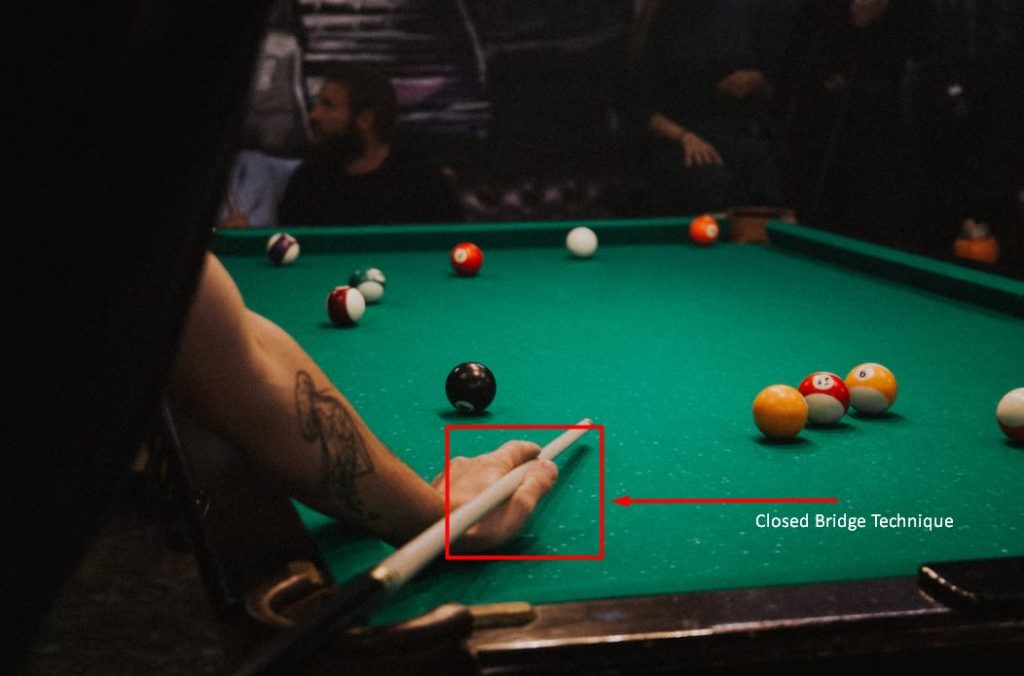
- A closed bridge is used in pool cue sports, such as eight-ball and nine-ball. The closed bridge is used to support the cue stick when making shots that require a large amount of spin on the cue ball, such as draw shots or follow shots.
- The closed bridge is made by placing the cue stick on the table and using the non-shooting hand to grip the cue stick behind the point where it touches the table. The forefinger and middle finger are then used to hold the cue stick in place, while the thumb supports the rear of the cue stick.
- The result is a “closed” bridge, with the non-shooting hand effectively holding the cue stick. This type of bridge provides much more control over the cue stick than an open bridge and allows for a more significant amount of spin on the cue ball.
- However, it is more challenging to master than an open bridge, and it takes some practice to get the hang of it. In general, closed bridges are only used by more experienced players.
What Is a Rail Bridge Technique?

The rail bridge technique is a way to support the cue stick when making long shots. The player rests the cue stick on the pool table rails, using them as support for the shot.
This technique can be used for offensive and defensive shots and helps make difficult shots. Rail bridges are also sometimes used simply for comfort, to give the player a break from holding the cue stick directly.
What Is the Raised Bridge Technique in Pool Cue?
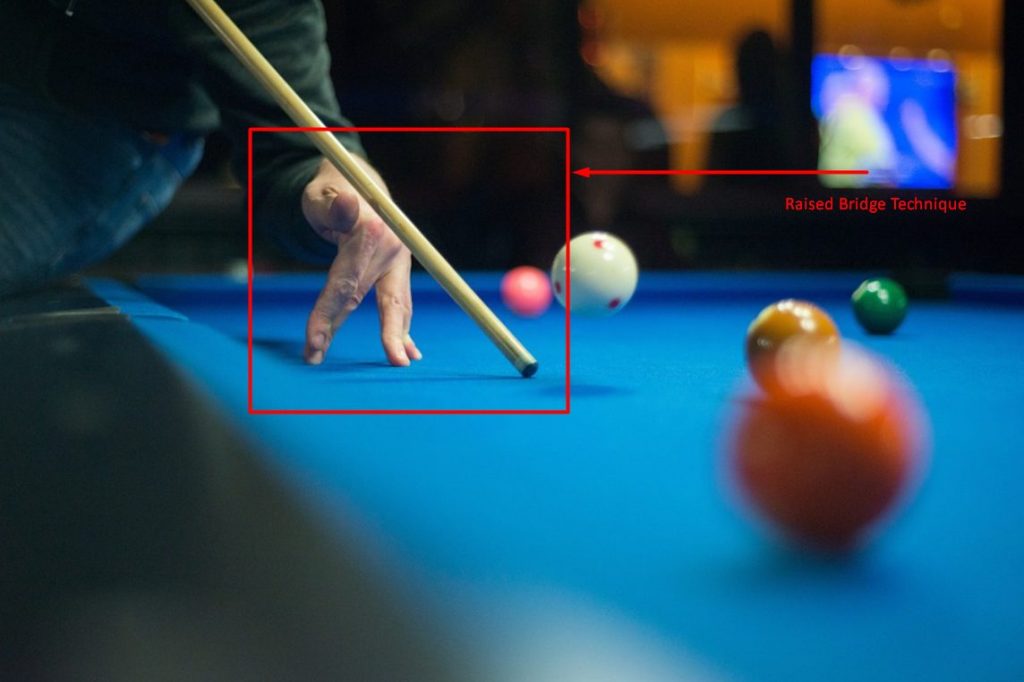
The raised bridge technique is a way to shoot pool cues over obstacles on the table. The player holds the cue stick in their hand and uses their thumb and index finger to raise the cue stick over the block. The player then takes their shot, using the raised cue stick to strike the cue ball.
This technique can clear obstacles, such as other balls on the table, or get a better angle on a shot. It takes practice to master the process, but it can help shoot with the help of pool cues.
Conclusion For Readers
Billiards and pool are great games to improve hand-eye coordination, thinking skills, and more. We highly recommend trying out billiards or pool with billiard gloves if you’re looking for a new hobby that will keep you entertained for hours on end.
And once you get the hang of it, don’t forget to practice your cue-holding techniques to become a pro!
Other Useful Articles
- How To Rack Pool Balls? [Follow This Guide]
- How To Play Pool? [Ultimate Guide For Beginners]
- Why is billiards called pool? [Know The Answer]
- What Is English in Pool
- How to Get Better at Pool
- Is Billiards a Dying Sport

I’m Maverick and I love playing pool games with my friends. I found myself struggling for proper guidance playing this game and selecting good quality equipment for it. I, then, decided to create this blog to guide pool enthusiasts to get right information and start enjoying their game.

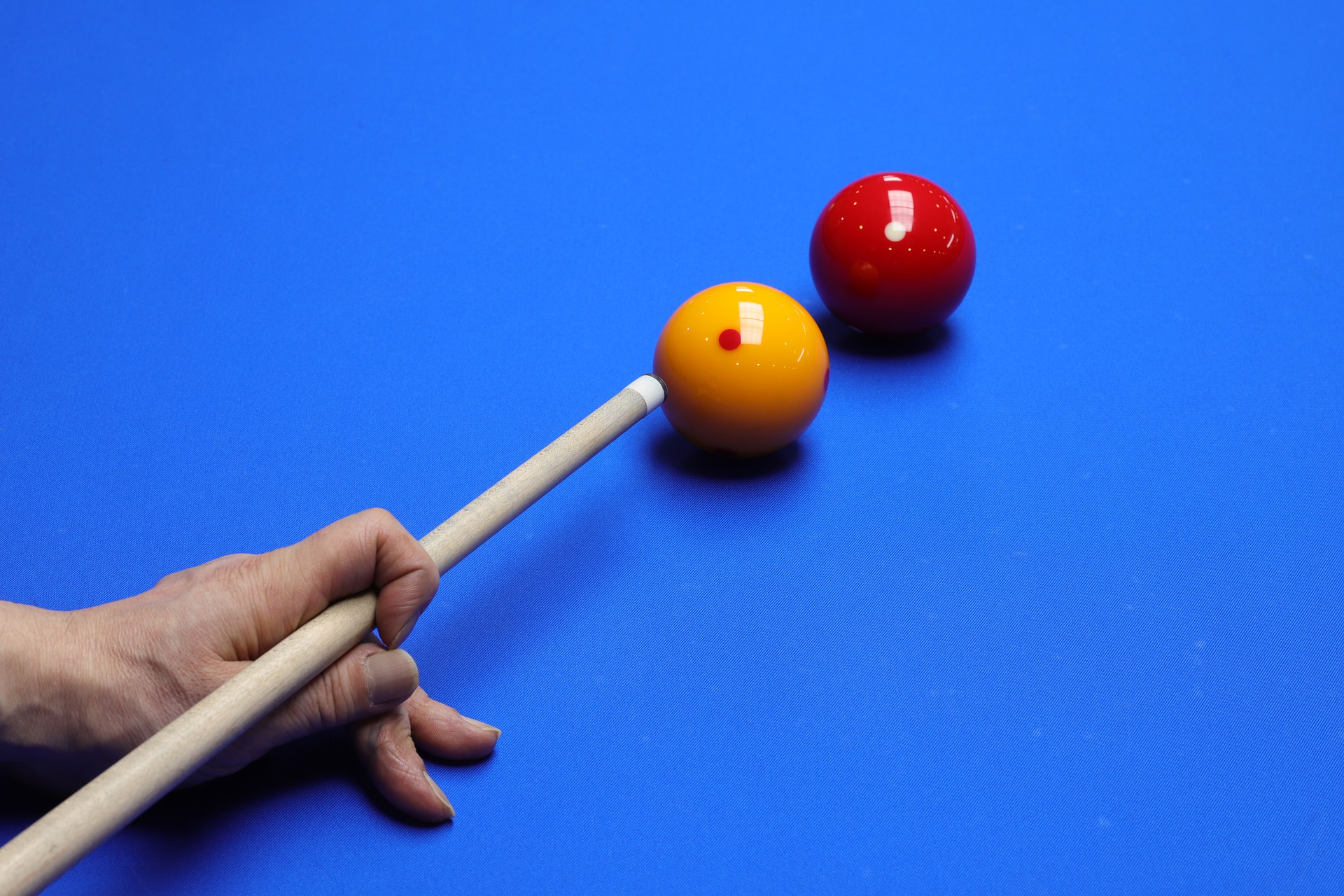
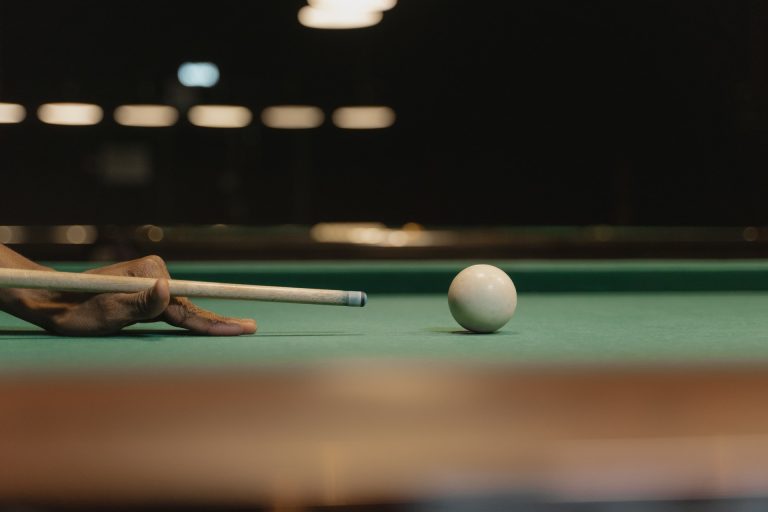
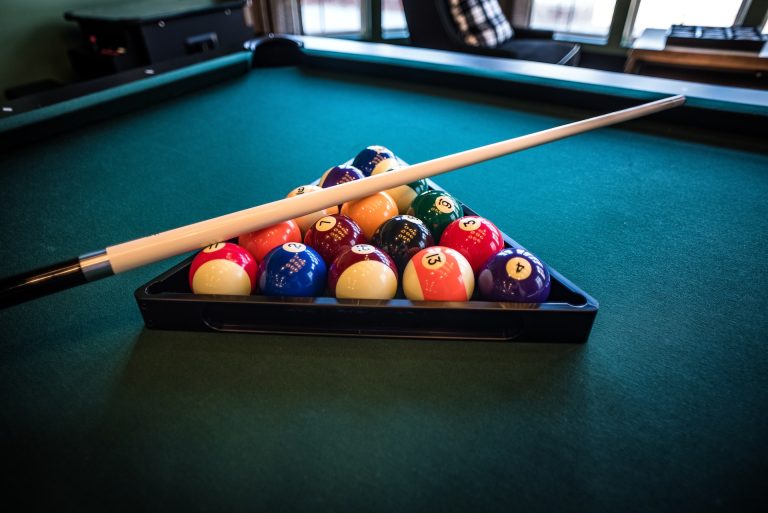
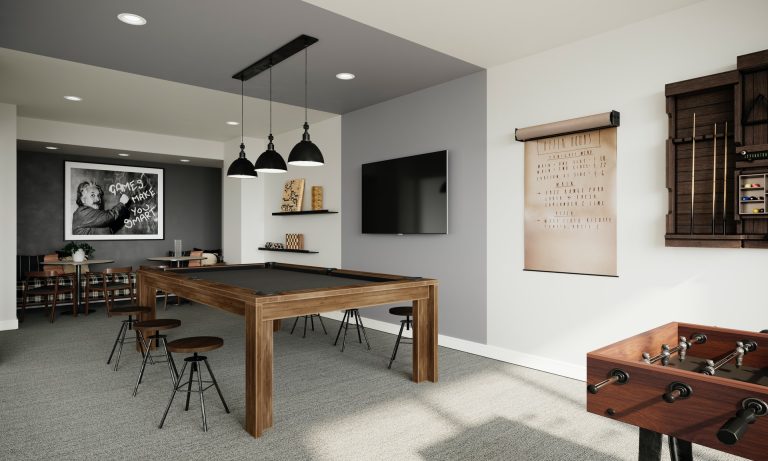
![What Is Pool Sport? [Find It Now]](https://poolcuechamp.com/wp-content/uploads/2022/04/pexels-tima-miroshnichenko-6253680-768x512.jpg)
